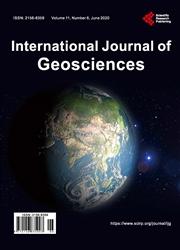Geodynamics of the South Balkan and Northern Aegean Regions Driven by the Westward Escape of Anatolia
引用次数: 0
Abstract
The Plio-Quaternary deformation pattern of the northern Aegean and south Balkan regions is interpreted as an effect of the interaction between the Anatolian-Aegean-Pelagonian system (Tethyan belt), undergoing westward extrusion and strong deformation, and the surrounding plates (Nubia, Europe and Adriatic). Since the middle-late Miocene, the collision of the Tethyan belt with the continental Adriatic domain has caused strong E-W shortening in the outer Hellenides and Albanides, also involving the southward extrusion of the Peloponnesus wedge, at the expense of the Ionian oceanic domain. The roughly E-W extension recognized in the western South Balkan zones (Ma-cedonia and eastern Albania) is related to the divergence between the Pelagonian belt (Albanides and Hellenides) and the Rhodope-Moesia domain. Stressed by the westward displacement of the central Anatolian plateau and by the southward bowing of the Cycladic Arc, the northern Aegean zone has con-temporaneously undergone E-W compression and N-S extension, which has generated a series of dextral shear faults, delimiting a number of slats. The westward displacement and deformation of such slats can explain the morphological features of the northern Aegean南巴尔干和爱琴海北部地区在安纳托利亚向西迁移的推动下的地球动力学
爱琴海北部和巴尔干南部地区的上第三纪-第四纪变形模式被解释为经历了向西挤压和强烈变形的安纳托利亚-爱琴海-伯拉哥尼亚体系(特提斯带)与周围板块(努比亚、欧洲和亚得里亚海)相互作用的结果。中新世中晚期以来,特提斯带与亚得里亚海大陆域的碰撞导致了外Hellenides和Albanides的强烈东西向缩短,也涉及到伯罗奔尼撒楔形向南挤压,以牺牲爱奥尼亚洋域为损失。南巴尔干西部地区(马塞多尼亚和阿尔巴尼亚东部)的大致东西向伸展与Pelagonian带(Albanides和Hellenides)与Rhodope-Moesia域的分裂有关。受安纳托利亚高原中部向西移动和基克拉迪弧向南弯曲的压力,爱琴海北部地区同时经历了东西向的挤压和南北向的伸展,形成了一系列右旋剪切断裂,划分出若干条板条。这些板条向西移动和变形可以解释爱琴海北部的形态特征
本文章由计算机程序翻译,如有差异,请以英文原文为准。
求助全文
约1分钟内获得全文
求助全文

 求助内容:
求助内容: 应助结果提醒方式:
应助结果提醒方式:


